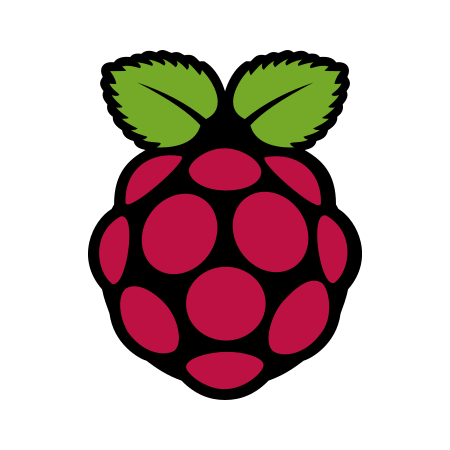I’m running a raspberry pi 8GB version, as my plex entertainment center. I also ruin a pihole. The pie has an Ethernet connection.
I have two TV’S, a 2017 Samsung and a 2021 Hisense. Both with Ethernet connections.
My Samsung tv can’t stream certain shows at all, they stutter like crazy I’m guessing it has something to do with the encoders? Yesterday I got a message color range not supported whatever the hell that is.
The Hisense TV does better on some shows, but still 4k content is unwatchable, it’s constantly buffering.
So, is the problem with the pi? Is it not powerful enough for 4k shows, or some encoding problem or something?
Or is it the TVS, should I buy a Roku box instead, would that solve the streaming problems?
deleted by creator
These are my settings for do I need to check anything else?
While something I playing, go to the Plex dashboard for the server. It will show the video and audio stream format/codec. Under each it should say Direct Play. That means it’s not transcoding.
So it should not be transcoding, is that the idea?
Exactly. I would expect a pi to struggle with transcoding. The quality of apps on a lot of smart tvs is poor (particularly older ones that aren’t roku or android, and that Samsung is neither).
I bet it would work a lot better on the Samsung if you get an Android TV device (Onn 4k is a good inexpensive one) or roku, if you prefer that platform.
But first it’s best to know if transcoding is the problem. It might be direct stream but having network problems.
So why does the pi transcode? What is the purpose of this? Is it detecting that my tv’s can’t handle the encoding, so it’s changing it on the fly? So having an android box would eliminate the need for transcoding?
If the playback device (tv in this case) doesn’t support the codec used for audio or video it must be transcoded for playback to work at all. If this is the cause it could be the tv doesn’t have the right codecs and a standalone device may be better. It depends on the codecs you are using.
Also, if the network connection is slow, it will transcode so that that playback is smooth but lower resolution or quality.
In either case, if the Plex server isn’t strong enough it will struggle. You can investigate this on the dashboard as well, it shows a live cpu usage graph.
Rpi simply cannot handle live transcoding because it’s a computationally expensive process. Audio and video codec support is a confusing landscape. Some of it is hardware support, some software support, sometimes there are weird licensing quirks… I replaced my Chromecast with an Nvidia Shield and it mostly eliminated transcodes, though i still sometimes encounter issues. For maximum compatibility look for files that are MP4, x264 (or h264) and AAC.
I grab mostly the most popular files so I’m hoping they are the good format. I wonder if I can tell sonarr radarr to only grab the good type of files?
https://trash-guides.info/Radarr/Radarr-collection-of-custom-formats/
There’s one for sonarr too.
Your options are something with more HP on the server side, or something that can direct play at the TV side. I’ve discovered a Ryzen 3300X is just not quite powerful enough to transcode 4k content, so I’m in the process of migrating media off my NAS and onto a dedicated server with an Intel 8700. The easiest path on the server side is to get an older Dell/HP/whatever desktop with as new of an Intel CPU as you can find - newer iGPUs support more codecs, but the 8th generation (like my 8700) seems to be a decent sweetspot. The Intel A380 also supports everything under the sun and is pretty cheap. Keep in mind you’ll need PlexPass or switch to Jellyfin if you want GPU transcoding.
On the playback side, I think Nvidia Shield is your best bet. I’ve found my Roku stick works well with most video content, but generally needs transcoding if I turn on subtitles :/ I used an M1 Mac Mini as an HTPC, which handled everything extremely well but it’s not as TV friendly nor as cheap - if it supported HDMI 2.1 and 4k120hz output I’d probably still be using it as an HTPC.
So more a full pc server instead of a nice compact pi… Yea maybe I’ll have to go that route. I’ll try a android tv box first.
Yep unfortunately. I would start with an Nvidia Shield or similar on the Samsung if that’s definitely where you want the 4k content. That’s more or less what I did, though I’ve evolved to where I want streaming to work perfect out of the box on whatever screen I feel like using.
The good news is you don’t need a lot of server (that’s good)
But you want very specific functionality (that’s bad)
Optimal hardware is not expensive, a reasonably modern Dell/HP/whatever desktop is probably fine (that’s good)
But it’s more complicated than “find something with H264/H265 support” because there’s like eighty flavors of everything and you might want things like AV1 so you don’t have to swap hardware in the future and you can run into problems where driver or library issues just randomly breaks certain codec combinations and there’s no Just Buy This answer. (…)
… that’s bad. (can I go now)
I’ve seen this issue come up often. Do not use the ethernet connections on the TV as they are frequently 100mbit even on brand new TVs and mostly likely the source of your bottleneck. Either use the wifi or as some suggested an Nvidia shield and hook that up to Ethernet.
Wait what do mean? The Ethernet is slower than WiFi on the tv?
Yep alot slower. You can Google it but you aren’t the first person to have this problem.


